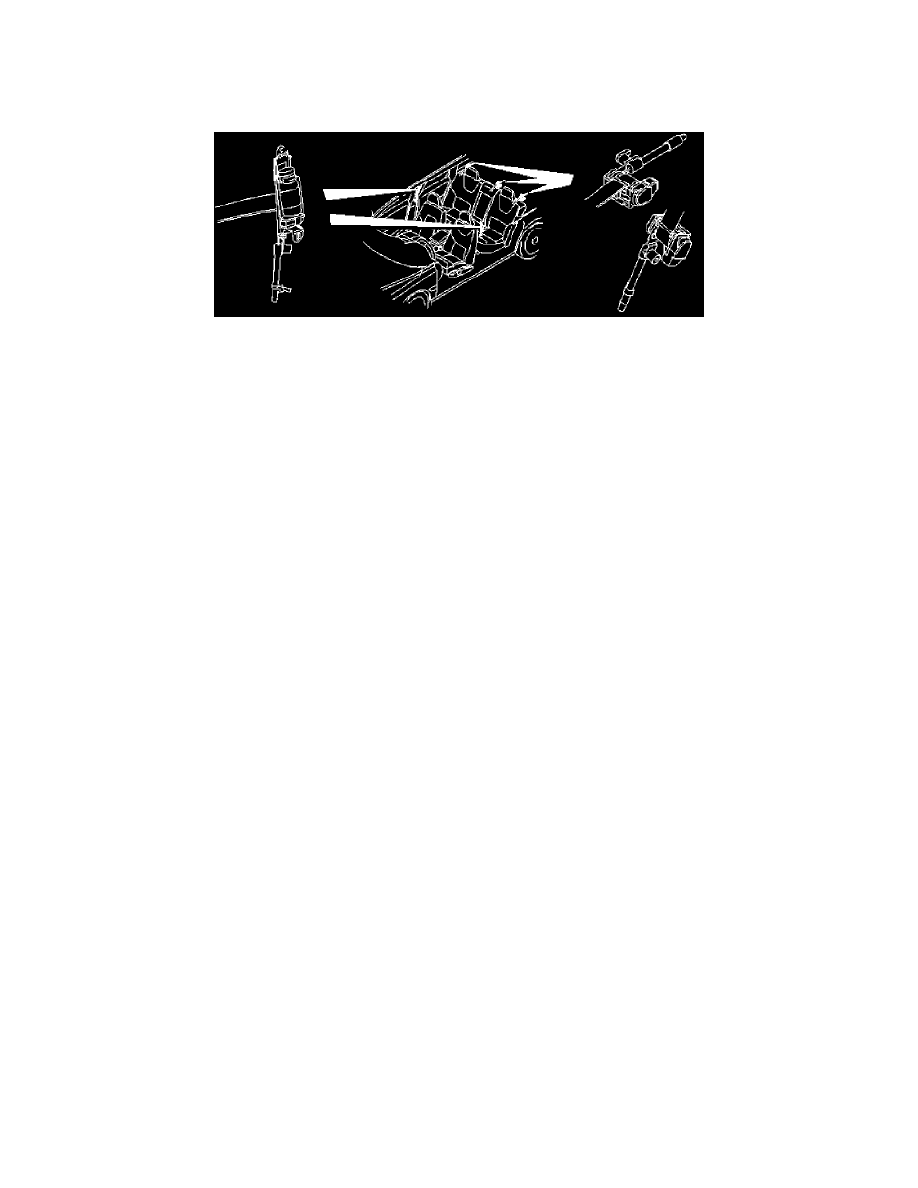V70 2.4T L5-2.4L Turbo VIN 58 B5244T3 (2002)

Seat Belt Tensioner: Description and Operation
Seat Belt Tensioners Front and Rear
Seat Belt Tensioners Front And Rear
There are five seat belt tensioners in the car. Two for the front seats and three for the rear seat. They contain an explosive charge which tensions the seat
belts when deployed. The function of the seat belt tensioner is to tighten the seat belt to restrict forward motion of the body. This in turn, reduces force
upon the chest from the airbag and seat belt.
The seat belt tensioners are separated from each other electrically.
This means that each seat belt tensioner has an individual power supply and ground from the control module. Information on whether the seat belts are
engaged or not is sent from the seat belt buckle switch. This happens in different ways depending on the model year:
-
Model year 1999-2002: The seat belt buckle switch in the front seat transmits a signal about the front seat belt buckles to the central electronic
module (CEM). This transmits the information onwards on the controller area network (CAN) to the supplemental restraint system module (SRS).
-
Model year 2003-: The front seat belt buckles are directly connected to the supplemental restraint system module (SRS).
The supplemental restraint system module (SRS) determines deployment of the seat belt tensioner based upon the use of the seat belts. If the seat belt is
not fastened, the seat belt tensioner does not activate. However, if the central electronic module (CEM) reads off faulty values for the front seat belt
buckles, the seat belt tensioners will activate and the airbags will deploy. Deployment of the airbags occurs in the same way as when the seat belts are not
fastened.
The seat belt tensioners consists of a pyrotechnical charge and a cylinder containing a piston. The piston is connected to a steel cable which is secured to
the seat belt reel. When the control module activates the seat belt tensioner the piston is driven downwards by the expanding gas. The piston tightens the
steel cable, which rolls up the seat belt.
NOTE: Ohmmeters or similar must not be used when testing the airbags or seat belt tensioner. Disconnect the airbags or seat belt tensioners before
testing. The airbags may accidentally deploy if this is not done. Which can result in very serious injury or death.
